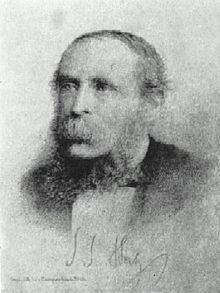Nationality Belgian | Name Jean Stas Role Chemist | |
 | ||
Born August 21, 1813Leuven ( 1813-08-21 ) Known for Accurate determinations of atomic weights Died December 13, 1891, Brussels, Belgium | ||
Influenced by Jean-Baptiste Dumas | ||
Jean Servais Stas (21 August 1813 – 13 December 1891) was a Belgian analytical chemist that co-discovered the weight of carbon.
Contents
Life and work
Stas was born in Leuven and trained initially as a physician. He later switched to chemistry and worked at the École Polytechnique in Paris under the direction of Jean-Baptiste Dumas. Stas and Dumas established the atomic weight of carbon by weighing a sample of the pure material, burning it in pure oxygen, and then weighing the carbon dioxide produced.
In 1840, Stas was appointed professor at the Royal Military School in Brussels. He acquired international fame by determining the atomic weights of the elements more accurately than had ever been done before, using an atomic mass of 16 for oxygen as his standard. His results disproved the hypothesis of the English physicist William Prout that all atomic weights must be integer multiples of that of hydrogen. These careful, accurate atomic weight measurements of Stas helped lay the foundation for the periodic system of elements of Dmitri Mendeleev and others.
Following the pioneering work of Lavoisier and his statement of the conservation of mass, the prolonged and exhaustive experiments of Stas supported the strict accuracy of this law in chemical reactions, even though they were carried out with other intentions. His research indicated that in certain reactions the loss or gain could not have been more than from 2 to 4 parts in 100,000. The difference in the accuracy aimed at and attained by Lavoisier on the one hand, and by Morley and Stas on the other, is enormous.
In 1850 Stas gave the evidence that the Belgian Count Hippolyte Visart de Bocarmé killed his brother-in-law by poisoning with nicotine.
Stas retired in 1869 because of problems with his voice caused by a throat ailment. He became commissioner of the mint, but resigned in 1872 because he disagreed with the government's monetary policy. Jean Stas died in Brussels and was buried at Leuven.
Honors and awards
On May 5, 1891 an event was held recognizing the 50th anniversary of Jean Servais Stas' membership in the Royal Academy of Belgium. Various presenters spoke about his significant scientific contributions. He was presented with a medal in his honor sculpted by Belgian engraver Alphonse Michaux and with an album containing accolades authored by scientific societies from around the world.
